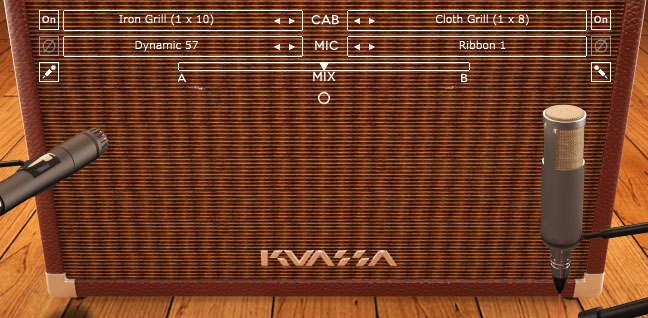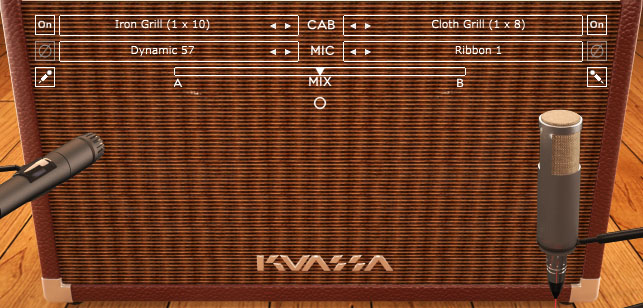
Dimitar Nalbantov Radiohead Creep guitar sound
“Creep“ was the debut single by the English alternative rock giant Radiohead, released in September 1992. One of the most memorable part from this song is the huge crushing guitar sound, that many generation of guitar players were astonished by. When the song moves from the verse to the chorus, Jonny Greenwood plays three blasts of finger muted guitar noise. I’m sure everyone remembers how they sounds. Let’s break it down and recreate it with Amp Simulations and Efektor pedals from Kuassa.
I’m using the Reason Rack Extension version, but you can easily copy the settings to the VST, VST3, AU and AAX version.
A small list of the gear used by the band members at that time:
Guitars:
Jonny Greenwood – Fender™ Telecaster
Ed O’Brien – Rickenbacker™ 360
Amps:
Fender™ Deluxe 85 : used for both for distorted and clean tones.
Fender™ Twin Reverb : used for the clean tone.
Pedals (Clean Tone):
1. Demeter Tremulator TRM-1
2. EHX PolyChorus
Amp 1: Fender Eighty-Five
Amp 2: Fender Twin Reverb
Pedals (High gain tone):
1. Marshall™ Shredmaster
Amp: Fender™ Eighty-Five
Verse – The Clean Tone
The clean tone starts with a tremolo pedal, then into a compressor pedal which goes into a chorus pedal right before the amp to give the tone an open “stereo” space feeling and then straight into the clean channel of the Kuassa Vermilion Amp.
In the verse clean preset – combinator for Reason DAW, I’m using Efektor TR3604 Tremolo Reason rack extension. I tweaked the efektor tremolo pedal to the closest point where I become really happy with the result. A nice slightly pulsating tremolo – convincing and enjoyable to play with.

Kuassa Efektor TR3604 tremolo setting
Then followed by Kuassa Efektor CP3603 compressor pedal because I needed a tool to shave the sine wave modulation and pulse from the tremolo pedal a little. I wanted it to sounds more mellow and not too emphasized. The guitar tone in the original recording was not too washed out from the tremolo effect and you can still hear the guitar timbre and the amplifier tonal qualities. That’s why I put the compressor right after the tremolo. The FET model of Efektor CP3603 with subtle compression setting made the difference. All knobs set almost at noon, trying to not push that hard the input of the amp and this feels like the sweetest spot. The dynamic and overall tone of the guitar chords were greatly improved.
Then straight into Amplifikation Vermilion guitar amp simulator “C” type – clean channel. The “C” amp simulation model has a clean, sparkling and tight sound which represents the amplifiers used by Jonny and Ed O’Brien really well.

Kuassa Amplifikation Vermilion (Rack Extension Version) clean guitar amp setting. Note that you can also use the VST/AU/AAX depends on your DAW.
Speaker 1: Iron Grill 1×10 with the classic 57 – A classic microphone. My first choice.
The 57 mic has 2-12kHz peak, which adds a natural presence and helps the guitars to cut through the mix.
Speaker 2: Cloth Grill 1×8 with Ribbon1.
The second small 1×8 speaker helped to clear the lows a little more, but then I needed some more body of the guitar to be restored back and the Ribbon1 resurrected some of the roundness and warmth that I was looking for.

Kuassa Amplifikation Vermilion (Plugin Version. VST/VST3/AU/AAX compatible)
Exact position of the microphones on the VST version.
Next, load the Efektor CP3604 Chorus. Set it to ‘Dimension’ mode, using it on stereo mode gave it a three dimensional depth. The true analog circuit modeling of the Dimension model gave me the depth and opened up the stereo image. The base tone was ready.

Kuassa Efektor CH3604 chorus setting
Lastly, add Reason’s DAW stock reverb – The “All Plate Spread” first stock preset.
Just a slight reverberation as a finishing touch.
So the full chain for the clean sound should looks like this:
The ‘Creep’ “Chug” heavy finger muted pre-chorus sound
First and foremost you have to work on your finger muting technique. Dampen the strings with your fretting fingers around 3th fret and strum really hard with picking hand. Equipped with the right pedal, the right amplifier and good mic technique always lead to best results! After listening closely, made a few research and analyzing the guitar sound, I’ve come to conclusion that it’s clearly the “Shredmaster” pedal with that gritty, British characteristic hitting the clean channel of the amp. The Shredmaster was probably most noted for being the favored distortion pedal of Kevin Shields of My Bloody Valentine and Jonny Greenwood from Radiohead. I needed a mid to high gain distortion pedal with op-amp gain circuit and diodes clipping, so I can easily get the distortion ONLY from a the pedal. In the same way like Radiohead guitarists are using it with Fender™ Eighty-Five clean channel.
Distortion source – Efektor Distortion DS3606
Kuassa Efektor “DS 3603” was my first pick.The ‘Lead Distortion’ mode in DS 3603 has a wide gain range from low and crunchy sounding overdrive to a real high gain saturation with nice sustain. The overall frequency range was clear with cutting through highs. It recreates the tone that I needed for the chorus, remarkably well.
Amplifier choice – Kuassa Vermillion “C”
The “C” model in Vermilion takes overdrive and distortion pedal really well and its nice platform for pedals. We can call it “pedal-friendly”
Amp cabinet and speakers
Back in the time, the 3 palm muted notes with the massive sound always got me. I have been wondering and thinking many times, it has to be the low end. Most of the time, closed-back 4×12″ cabs are preferable because of theirs big low resonance thump. But in our case The Blonde Vintage Cabinet 1×10 combined with Iron Grill 1×10 helped to get the sound even more tight and precise in the low end. It was much easier to finish the tone of the whole guitar chain, with no additional processing, even without a need of using an EQ.
Again with classic microphones
1. Blonde Vintage 1×10 – Dynamic 57 in off axis position.
2. Iron Grill 1×10 – Ribbon 1 in off axis position
Exact position of the microphones on the VST version
The cabinet speakers and properly positioned microphones are the fundamentals for getting the best possible results. You can save yourself from hours of sitting in front of your computer and trying to modify the whole sound of your guitar with an EQ. Always start experimenting with different cabs and microphone positions before reaching other tools.
Then add a little reverb, just like the clean preset.
After choosing the right pedal and the proper amplifier, the effect chain was very simple to build. The high gain chain for the chorus part is ready to rock!!!
Efektor Silencer Noise Gate – > DS3603 – > Amplifikation Vermilion “C” clean channel – > Reason’s RV7000 MkII.
Here you can download the archived package which includes track presets combinators for Reason DAW and Track Chains for Reaper DAW.
Download Link
Video
Tools Used
Hope you guys enjoy it!







